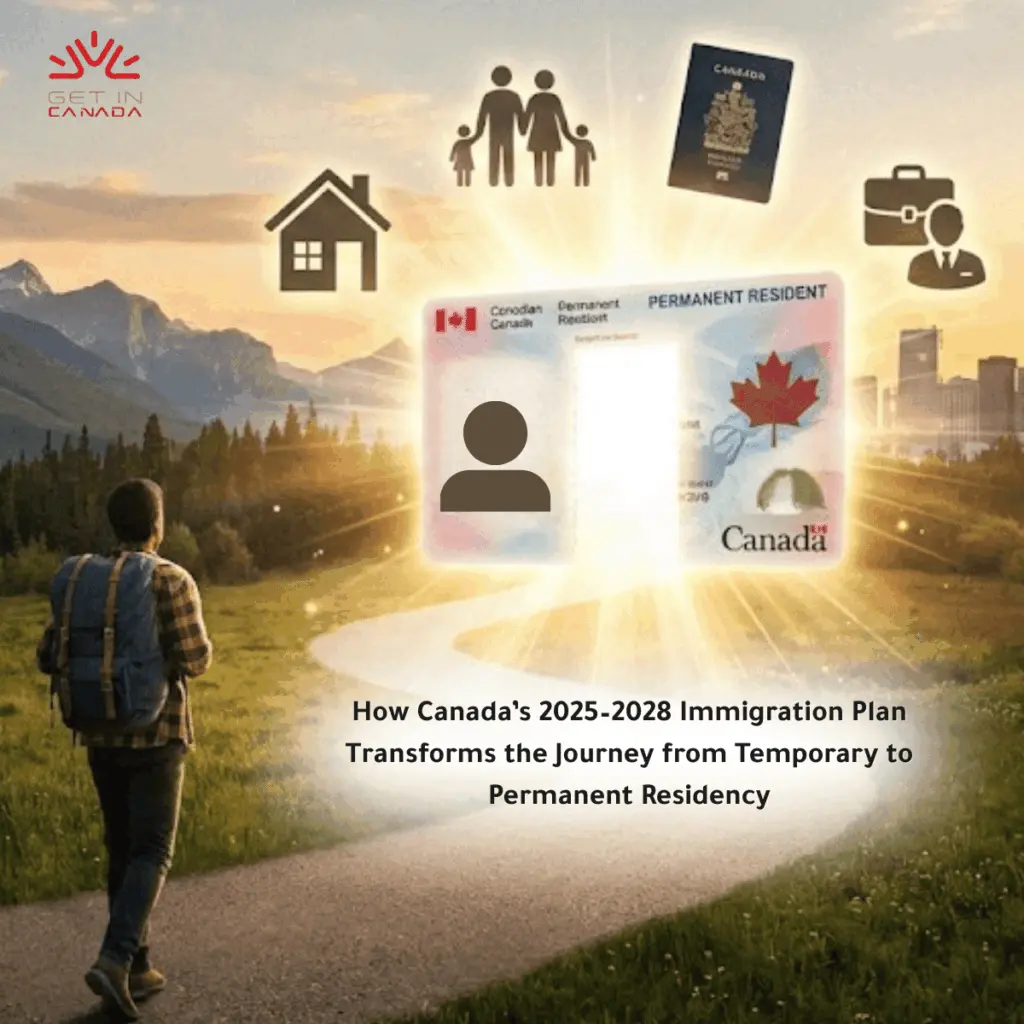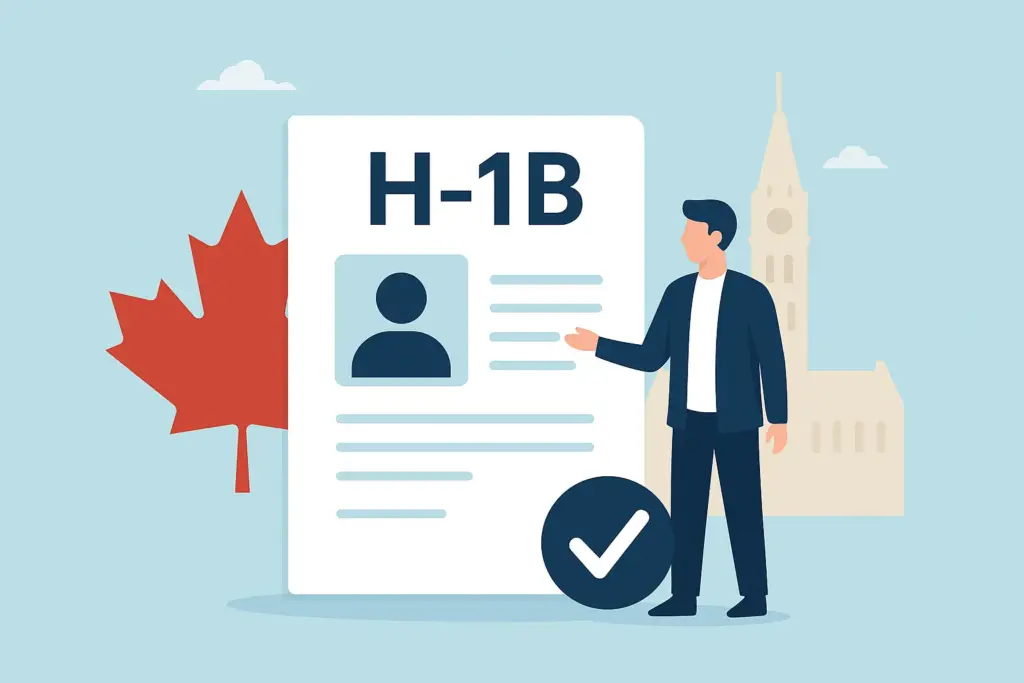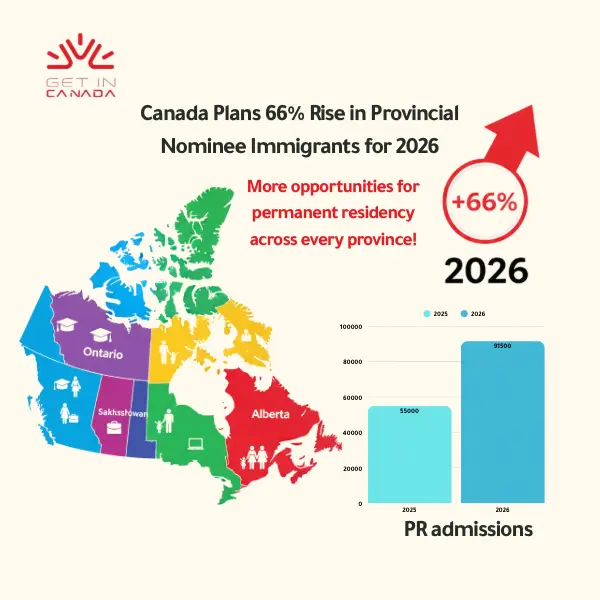Canada 2026–2028 Immigration Plan Brings a Major Boost to Provincial Nominee Programs
Canada has unveiled its Immigration Plan for 2026–2028, outlining a new direction that prioritizes permanent residency and regional growth while tightening controls on temporary residence programs such as study permits and the Temporary Foreign Worker Program (TFWP).
The Canada Immigration Plan 2026–2028 marks a significant shift toward long-term sustainability, with a focus on empowering provinces through the Provincial Nominee Program (PNP) and managing population pressures caused by temporary residents.
A Major Boost to the Provincial Nominee Program (PNP)
Under the Canada Immigration Plan 2026–2028, the Provincial Nominee Program sees a historic rise in its target numbers. In 2026, Canada will admit 91,500 permanent residents through the PNP, representing a 66% increase from the previous plan’s 55,000 target.
This growth demonstrates a renewed trust in provincial governments to identify and nominate skilled workers that meet regional labour demands. The PNP has become a key driver for permanent residence in Canada, especially for:
- Skilled and semi-skilled workers (TEER 4 and 5)
- Candidates with lower Comprehensive Ranking System (CRS) scores
- Entrepreneurs and investors targeting smaller provinces
- Workers who were previously excluded due to reduced provincial allocations
This expansion reflects a broader strategy within the Canada Immigration Plan 2026–2028: encouraging permanent settlement rather than short-term migration.
Book Your Consultation Session →
Stable Permanent Residence Targets but Major Shifts in Composition
While the total permanent residence admissions remain steady at 380,000 per year, the composition of these numbers reflects a strategic realignment.
| Category | 2026 | 2027 | 2028 |
| Economic | 239,800 | 244,700 | 244,700 |
| Family Reunification | 84,000 | 81,000 | 81,000 |
| Refugee & Humanitarian | 56,200 | 54,300 | 54,300 |
The Canada Immigration Plan 2026–2028 emphasizes the economic class, particularly the PNP, which is now one of the largest pathways to Canadian permanent residency.
Additionally, French-speaking admissions outside Quebec are projected to increase from 9% (30,267 people) in 2026 to 10.5% (35,175) in 2028—supporting Canada’s bilingualism and diversity goals.
Cuts to Study Permits in Canada and the Temporary Foreign Worker Program (TFWP)
The Canada Immigration Plan 2026–2028 introduces major reductions in temporary residence programs, most notably for international students and temporary foreign workers.
| Category | 2026 (Current Plan) | 2026 (Previous Plan) |
| Workers | 230,000 | 210,700 |
| Students | 155,000 | 305,900 |
| Total | 385,000 | 516,600 |
This represents a 50% reduction in study permits in Canada, from over 300,000 to 155,000, as the government seeks to reduce the number of temporary residents to 5% of the total population by 2027.
For many international students, this means tighter restrictions on eligibility for post-graduation work permits (PGWPs) and spousal open work permits, now limited to select graduate and professional programs.
International Mobility Program (IMP) Gains Ground as TFWP Shrinks
The Canada Immigration Plan 2026–2028 also adjusts how work permits are distributed. While the TFWP target drops to 60,000 (from 82,000), the International Mobility Program (IMP) target rises to 170,000 (from 128,700).
| Program | 2026 | Change |
| Temporary Foreign Worker Program (TFWP) | 60,000 | ↓ 22,000 |
| International Mobility Program (IMP) | 170,000 | ↑ 41,300 |
This signals a shift away from employer-driven LMIA-based work permits toward LMIA-exempt IMP permits, such as:
- International Experience Canada (IEC) for youth exchanges
- Bridging Open Work Permits (BOWP) for PR applicants
- Spousal Open Work Permits (SOWP)
- Post-Graduation Work Permits (PGWP)
Through the IMP, the government can better control the inflow of foreign workers while supporting cultural and economic exchange programs.
Policies Shaping the Future of Immigration in Canada
Several 2024–2025 policy reforms continue to shape the Canada Immigration Plan 2026–2028. These include:
- Capping study permit applications nationwide
- Restricting PGWP eligibility for certain programs and institutions
- Limiting spousal work permits to spouses of highly skilled workers or graduate students
- Moratorium on low-wage LMIAs in regions with unemployment above 6%
Learn more about Canada’s Immigration levels plan 2026-2028
These changes have already produced results: in 2025, international student admissions fell 70%, while temporary foreign worker entries declined by 50%.
Book Your Consultation Session →
What the 2026–2028 Canada Immigration Plan Means for Applicants
For future immigrants, the Canada Immigration Plan 2026–2028 is both a challenge and an opportunity. The focus on permanent residency through the PNP means that candidates should:
- Research provincial labour needs and align skills accordingly.
- Target PNP streams instead of relying solely on Express Entry.
- Build stronger ties to specific provinces for nomination advantages.
Meanwhile, students and temporary workers must prepare for stricter eligibility rules and fewer permits overall.
The Canada Immigration Plan 2026–2028 reflects a decisive pivot toward sustainability. By boosting the Provincial Nominee Program and reducing study permits and TFWP positions, Canada is clearly prioritizing long-term settlement, regional development, and economic balance.
This plan may mark the end of Canada’s rapid immigration surge—but it also opens the door to more stable, regionally anchored pathways for those seeking a permanent future in Canada.











